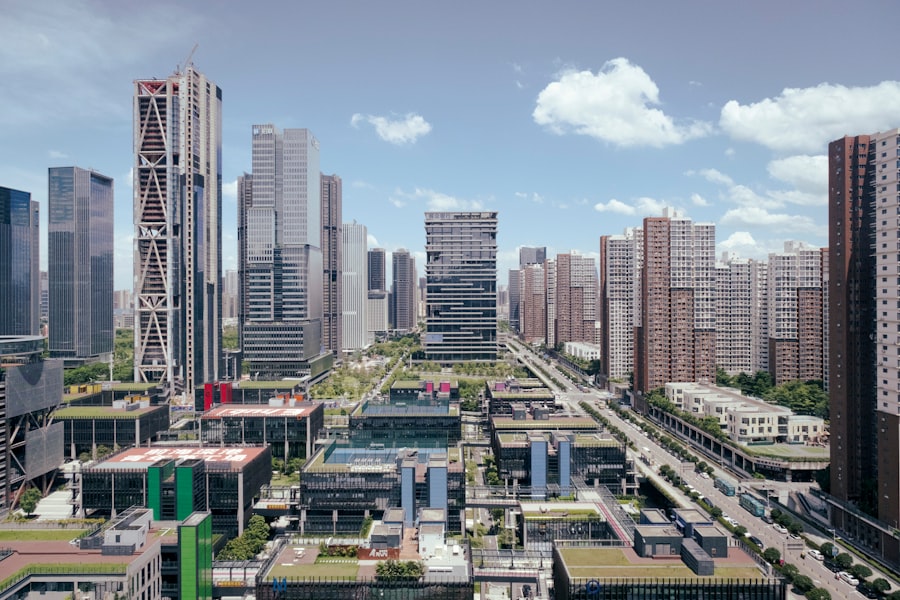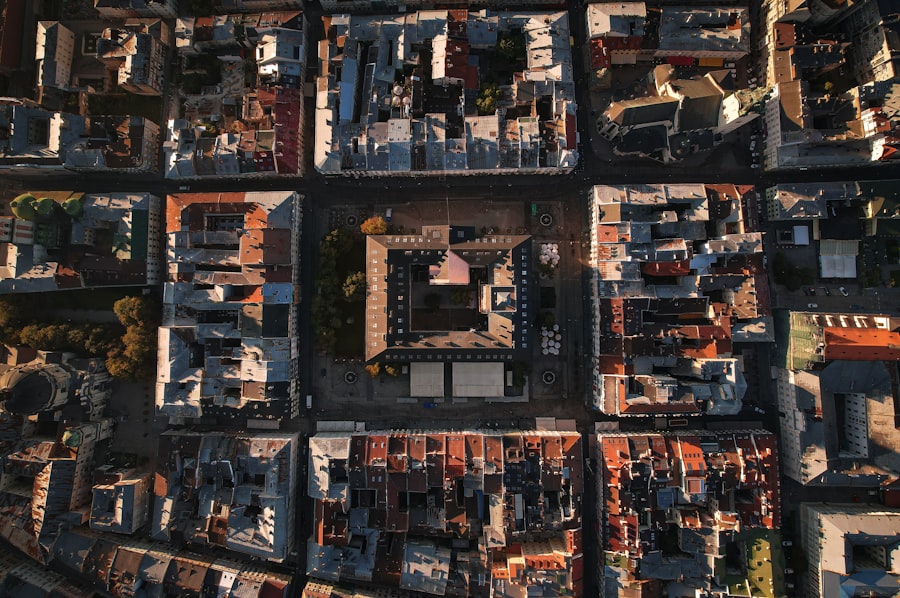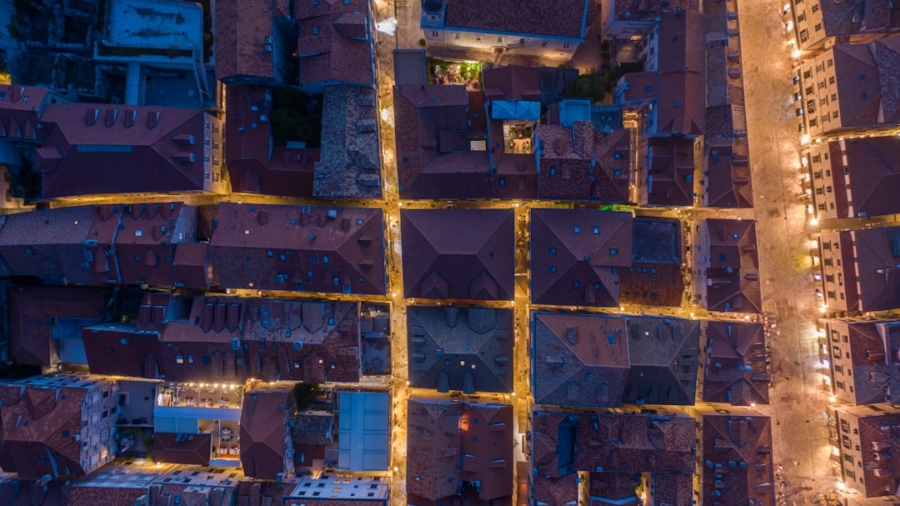The Internet of Things (IoT) has emerged as a transformative force in urban development, reshaping how cities operate and interact with their inhabitants. By connecting a myriad of devices and sensors to the internet, IoT facilitates the collection and exchange of vast amounts of data, which can be harnessed to improve urban living conditions. This data-driven approach enables city planners, policymakers, and residents to make informed decisions that enhance the quality of life in urban environments.
As cities continue to grow and evolve, the integration of IoT data into urban development strategies becomes increasingly vital. Urban areas are often characterized by complex systems that require efficient management to ensure sustainability and livability. The integration of IoT technologies allows for real-time monitoring and analysis of various urban parameters, such as traffic flow, energy consumption, waste management, and public health.
This capability not only aids in addressing immediate challenges but also supports long-term planning and development initiatives. As cities face mounting pressures from population growth, climate change, and resource scarcity, leveraging IoT data is essential for creating resilient urban ecosystems that can adapt to changing conditions.
Key Takeaways
- IoT data plays a crucial role in urban development by providing valuable insights for decision-making and improving the quality of life in cities.
- IoT technology is essential for creating smart cities, as it enables the collection and analysis of real-time data to optimize various urban systems and services.
- Urban planning benefits from the collection and analysis of IoT data, as it helps in understanding and addressing the needs of the community and improving overall city infrastructure.
- IoT data is instrumental in improving transportation and infrastructure in urban areas by enabling better traffic management, reducing congestion, and enhancing public transportation systems.
- Utilizing IoT data for environmental sustainability in urban areas helps in monitoring and managing energy consumption, waste management, and air and water quality, contributing to a greener and healthier city environment.
The Role of IoT in Smart Cities
Smart cities represent a paradigm shift in urban development, where technology is employed to enhance the efficiency and effectiveness of city services. At the heart of this transformation lies IoT, which connects devices and systems to gather data that informs decision-making processes. For instance, smart traffic lights equipped with sensors can adjust their timing based on real-time traffic conditions, reducing congestion and improving air quality.
Similarly, smart waste management systems can optimize collection routes based on fill levels detected by sensors in waste bins, leading to reduced operational costs and environmental impact. Moreover, IoT plays a crucial role in enhancing citizen engagement within smart cities. Through mobile applications and online platforms, residents can access real-time information about public services, transportation options, and community events.
This transparency fosters a sense of community ownership and encourages active participation in local governance. By utilizing IoT data, city officials can better understand the needs and preferences of their constituents, leading to more responsive and tailored urban policies.
Collecting and Analyzing IoT Data for Urban Planning

The collection and analysis of IoT data are fundamental components of effective urban planning. Various sensors deployed throughout the city can capture a wide range of information, from environmental conditions to human behavior patterns. For example, air quality sensors can monitor pollution levels in different neighborhoods, providing valuable insights into public health risks.
Similarly, pedestrian counters can track foot traffic in commercial districts, helping businesses and city planners make informed decisions about infrastructure investments. Data analytics tools play a pivotal role in transforming raw IoT data into actionable insights. Advanced algorithms can identify trends and correlations within the data, enabling planners to forecast future urban challenges and opportunities.
For instance, predictive analytics can help anticipate traffic congestion during peak hours or identify areas at risk of flooding based on historical weather patterns. By integrating these insights into urban planning processes, cities can proactively address issues before they escalate, ultimately leading to more sustainable and resilient urban environments.
Improving Infrastructure and Transportation with IoT Data
IoT data has the potential to revolutionize infrastructure management and transportation systems within urban areas. Smart infrastructure solutions leverage real-time data to optimize maintenance schedules and resource allocation.
This proactive approach not only extends the lifespan of infrastructure but also minimizes disruptions for residents. In transportation, IoT data enhances mobility by providing real-time information on public transit systems. Buses and trains equipped with GPS technology can relay their locations to passengers via mobile apps, reducing wait times and improving overall user experience.
Additionally, traffic management systems can utilize data from connected vehicles to adjust traffic signals dynamically, ensuring smoother traffic flow. By integrating these technologies, cities can create more efficient transportation networks that reduce congestion and lower carbon emissions.
Utilizing IoT Data for Environmental Sustainability in Urban Areas
Environmental sustainability is a pressing concern for urban areas facing the challenges of climate change and resource depletion. IoT data plays a critical role in promoting sustainable practices by enabling cities to monitor and manage their environmental impact effectively. For instance, smart water management systems equipped with sensors can detect leaks in real-time, preventing water wastage and ensuring efficient distribution.
This capability is particularly crucial in regions experiencing water scarcity. Furthermore, IoT technologies facilitate the monitoring of energy consumption across various sectors within the city. Smart meters installed in residential and commercial buildings provide detailed insights into energy usage patterns, empowering residents to make informed decisions about their consumption habits.
By analyzing this data, city officials can identify opportunities for energy efficiency improvements and promote renewable energy sources. The integration of IoT data into environmental sustainability initiatives not only helps mitigate climate change but also enhances the overall quality of life for urban residents.
Enhancing Public Safety and Security through IoT Data

Public safety is a paramount concern for urban areas, and IoT data offers innovative solutions to enhance security measures. Surveillance cameras equipped with advanced analytics capabilities can monitor public spaces for suspicious activities in real-time. By leveraging facial recognition technology and behavioral analysis algorithms, law enforcement agencies can respond more effectively to potential threats.
This proactive approach not only deters criminal activity but also fosters a sense of safety among residents.
For example, connected sensors can monitor structural integrity during earthquakes or floods, providing critical information to first responders about affected areas.
Similarly, health monitoring devices can track the spread of infectious diseases within communities, enabling public health officials to implement timely interventions. By harnessing IoT data for public safety initiatives, cities can create safer environments that prioritize the well-being of their residents.
Challenges and Ethical Considerations in Using IoT Data for Urban Development
Despite the numerous benefits associated with IoT data in urban development, several challenges and ethical considerations must be addressed. One significant concern is data privacy; as cities collect vast amounts of personal information through connected devices, ensuring the protection of citizens’ privacy becomes paramount. Striking a balance between leveraging data for public good while safeguarding individual rights requires robust policies and transparent practices.
Additionally, the digital divide poses a challenge in the equitable implementation of IoT technologies across urban populations. Not all residents have equal access to technology or the internet, which can exacerbate existing inequalities in service delivery and participation in civic life. Policymakers must prioritize inclusivity by ensuring that all community members benefit from smart city initiatives.
This may involve investing in digital literacy programs or providing affordable access to technology for underserved populations.
The Future of Urban Development with IoT Data
Looking ahead, the future of urban development will be increasingly shaped by advancements in IoT technology and data analytics. As cities continue to embrace smart solutions, the potential for innovation is vast. Emerging technologies such as artificial intelligence (AI) and machine learning will further enhance the capabilities of IoT systems, enabling more sophisticated analysis and predictive modeling.
Moreover, as public awareness of sustainability grows, there will be a greater emphasis on integrating IoT data into climate action plans and resilience strategies. Cities will likely adopt more comprehensive frameworks that prioritize environmental stewardship alongside economic growth. Collaborative efforts between governments, private sector stakeholders, and communities will be essential in realizing this vision.
In conclusion, the integration of IoT data into urban development represents a significant opportunity for cities to enhance their resilience, sustainability, and livability. By harnessing the power of connected devices and advanced analytics, urban planners can create smarter environments that respond effectively to the needs of their residents while addressing pressing global challenges.
In the rapidly evolving landscape of urban development, the integration of IoT data is proving to be a game-changer, offering insights that drive smarter city planning and resource management. A related article that delves into the technological advancements shaping various sectors is Best Software for Fault Tree Analysis in 2023. This piece explores cutting-edge software tools that enhance analytical capabilities, which are crucial for understanding complex systems and improving decision-making processes in urban environments. By leveraging such technologies, city planners can better anticipate potential issues and optimize urban infrastructure for future growth.
FAQs
What is IoT data?
IoT data refers to the information collected from various internet-connected devices and sensors. These devices can range from smart home appliances to industrial machinery, and they collect data on various aspects such as temperature, humidity, location, and more.
How does IoT data shape future urban development?
IoT data plays a crucial role in shaping future urban development by providing valuable insights into how cities function. This data can be used to optimize traffic flow, improve energy efficiency, enhance public safety, and create more sustainable and livable urban environments.
What are some examples of how IoT data is used in urban development?
Some examples of how IoT data is used in urban development include smart traffic management systems that use real-time data to reduce congestion, smart energy grids that optimize energy usage based on demand, and smart waste management systems that use sensor data to optimize collection routes.
What are the benefits of using IoT data in urban development?
The benefits of using IoT data in urban development include improved efficiency and sustainability, enhanced public safety, better resource management, and the ability to create more responsive and livable cities.
What are some challenges associated with using IoT data in urban development?
Challenges associated with using IoT data in urban development include data privacy and security concerns, interoperability issues between different IoT devices and systems, and the need for robust infrastructure to support the collection and analysis of large volumes of data.

